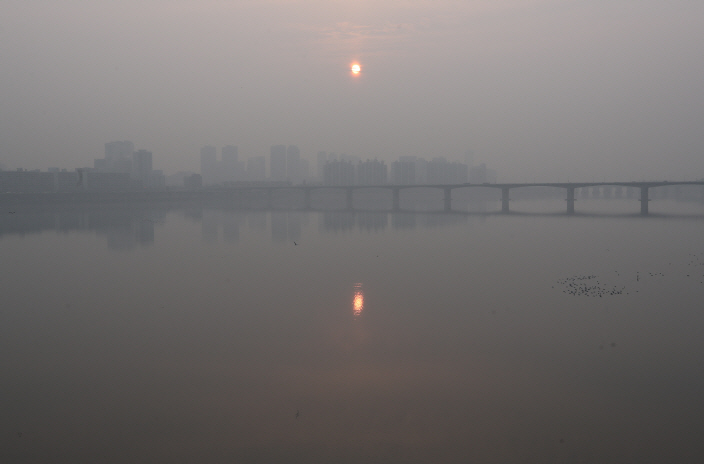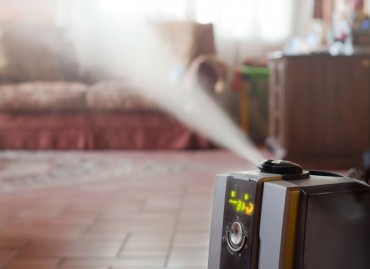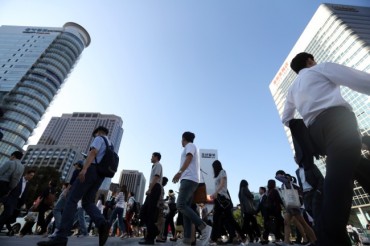
The sky over the Han River in Seoul, seen from the Mapo Grand Bridge, is thick with fine dust on March 6, 2019. (Yonhap)
SEOUL, Mar. 6 (Korea Bizwire) — A research arm of the Seoul Metropolitan Government said Wednesday that the recent high concentrations of ultrafine particles in the capital area have been caused by deteriorating weather conditions, including stagnant air.
The Seoul Research Institute of Public Health and Environment said pollutants blowing in from abroad have combined with stagnant local air to cause a spike in the level of ultrafine particles in Seoul and surrounding areas this year.
“The increase in the ultrafine dust concentrations in the capital area this year is attributable to the atmospheric stagnation caused by frequent formation of high atmospheric pressure in East Asia, increased winds from the west and reduction in cold winds from the north,” Shin Yong-seung, chief of the institute, said in a news conference at Seoul City Hall.
“Recently, there was a steady inflow of external ultrafine particles into the stagnant local air. In addition, domestic pollutants have stagnated in the air, resulting in the high density of fine dust,” Shin said.
Shin’s institute said the average density of ultrafine particles smaller than 2.5 micrometers in diameter, or PM 2.5, was 37 micrograms per cubic meter in January and February, the highest level in the past five years. During the two months, the daily average of PM 2.5 exceeded 35 micrograms for 23 days, compared with four-year averages of nine to 19 days, it noted. The World Health Organization recommends keeping PM 2.5 levels below 25 micrograms.
The institute said the ultrafine dust levels in Beijing and Shenyang jumped 23 percent in the same period.
It said the recent fine dust pollution in the Seoul area was affected by pollutants generated in China, noting Seoul logged a rise in fine dust concentrations about 12 to 30 hours after the generation of high-density ultrafine particles in Beijing and Shenyang.
For example, 20 hours after a fireworks event in Beijing on Feb. 19, the level of strontium, a key ingredient from the burning of fireworks, surged by 11.1 times in Seoul, the institute said.
“In the past, China accounted for more than 70 percent of high-density fine dust particles (in South Korea) in case of the eruption of fine dust pollution there. In ordinary times, the portion is 55 percent. An additional analysis will be needed into the latest burst of fine dust concentrations,” Shin said.
(Yonhap)






